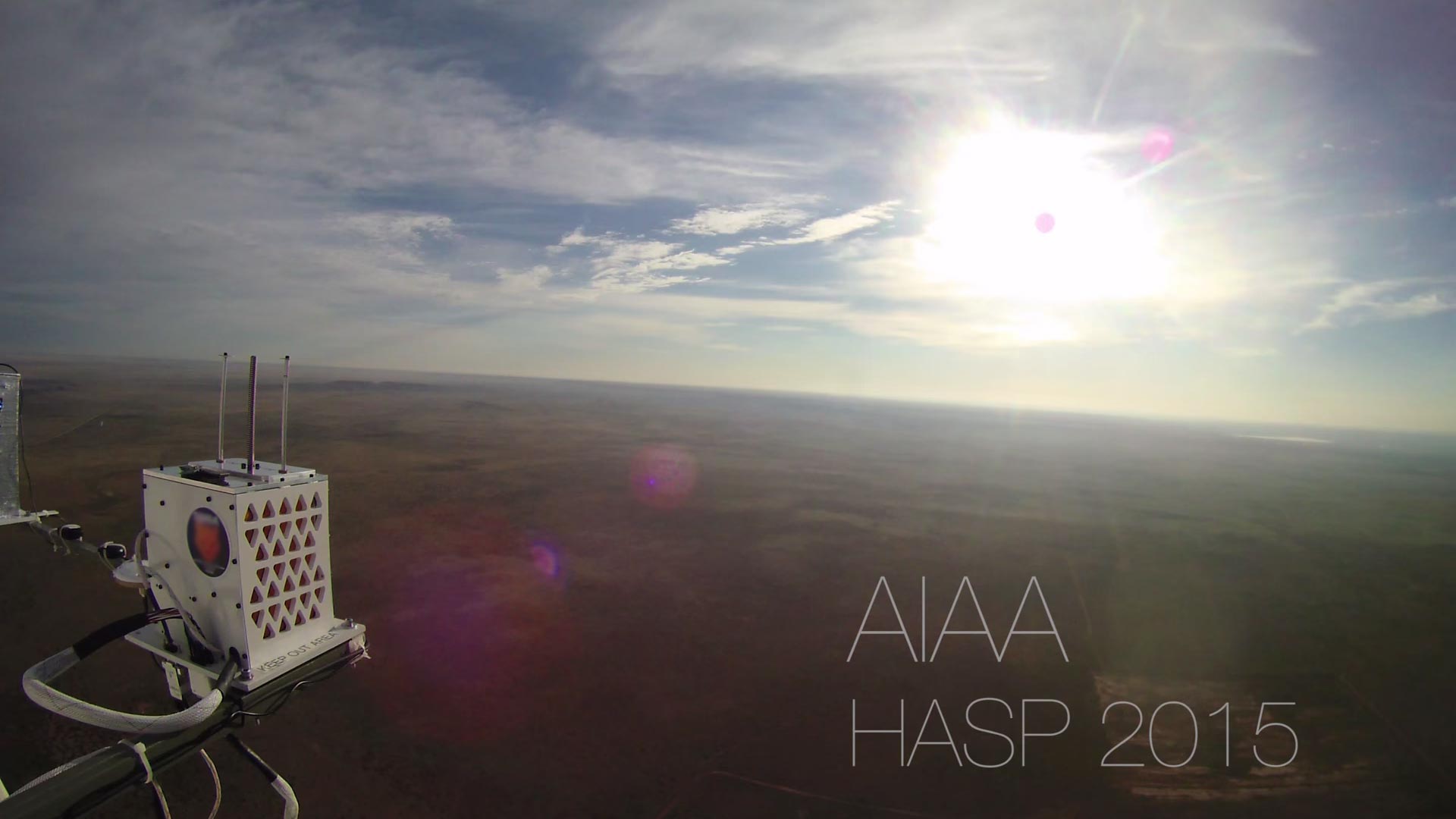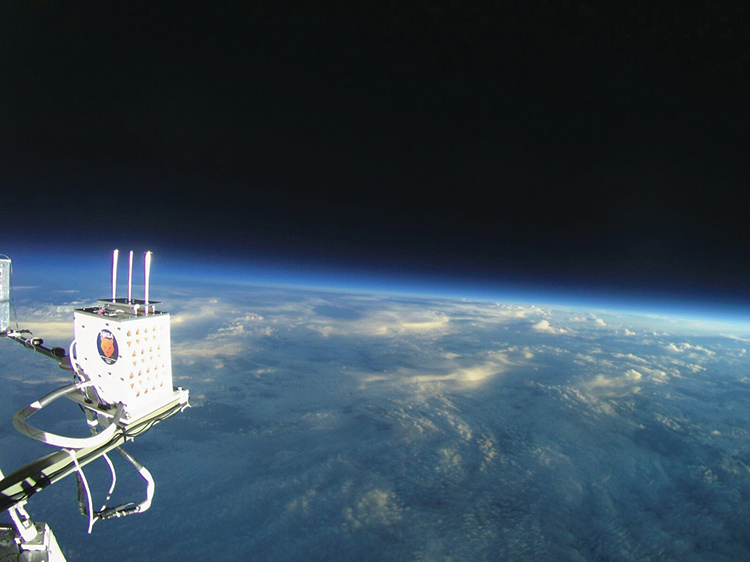When two students representing the Illinois Tech American Institute of Aeronautics and Astronautics team arrived at 3 a.m. at Fort Sumner in the New Mexico desert, the only thing standing between them and the launch of their team’s payload was Mother Nature. Fortunately, on September 7, 2015, the wind was calm, the temperature mild, and the visibility good—and the space balloon carrying a payload of the team’s own design was launched 36 kilometers high into Earth’s stratosphere.

Photo: Courtesy of HASP IIT
The Illinois Tech AIAA team was among 12 university teams nationally chosen to participate in the NASA Balloon Program Office’s 2015 High Altitude Student Platform. The student-made payload, fabricated in part in the university’s Idea Shop and Machine Shop and dubbed Scarlet Hawk III, marked the third-consecutive year that an Illinois Tech team was selected for the flight program project.
Weighing 2.41 kilograms and roughly the size of a loaf of bread, perched vertically, the Illinois Tech payload consisted of an aluminum interior frame encased in a white FRP box. Inside were a camera, fault resistor, temperature sensor, frequency communicator, antenna, and Arduino microprocessor that transmitted a simple signal to Illinois Tech’s team ground station. In addition to building all the individual parts, the students created the code that sent information to and received commands from NASA’s station at Fort Sumner airport.
Illinois Tech’s payload, along with those of the other university teams, was attached to a NASA-designed platform carried by an 11-million-cubic-foot, helium-filled, thin-polyethylene film balloon. Prior to launch, the student team tested its payload at NASA’s Columbia Scientific Balloon Facility in Palestine, Texas, where they were able to observe the payload’s performance under simulated launch conditions.
“The visit to the NASA facility was awesome,” says Caterina Lazaro (M.S. ECE ’15, Ph.D. candidate), Illinois Tech’s team leader. “It was a great experience and we got to learn a lot working under NASA engineers’ supervision—to see the facility and how they work, what the protocols of their work are, and to hear about their experiences working on different projects.”
Student payload projects are intended to be a stepping-stone to satellite projects. The focus of the team’s 2015 launch was to test the payload’s temperature control and pressure systems, light sensor, and a preliminary communications system between the payload and ground station in preparation for the team’s 2016 payload, which will house a more advanced, complete communications system.
The 2015 payload zigzagged westward over New Mexico and parts of Arizona along an unguided path of its own choosing; at the end of the balloon’s 23-hour flight NASA directed the balloon to slowly deflate, ensuring a safe landing outside Albuquerque.

Photo: Courtesy of Adnan Baleh (M.S. EE ’15)

[The view of Earth from the 2015 Illinois Tech student payload.]
Photo: Courtesy of Adnan Baleh (M.S. EE ’15)
More Online
Time-lapse Footage from Illinois Tech’s 2015 Student Payload: https://www.youtube.com/watch?v=tIZuxmi5b5k